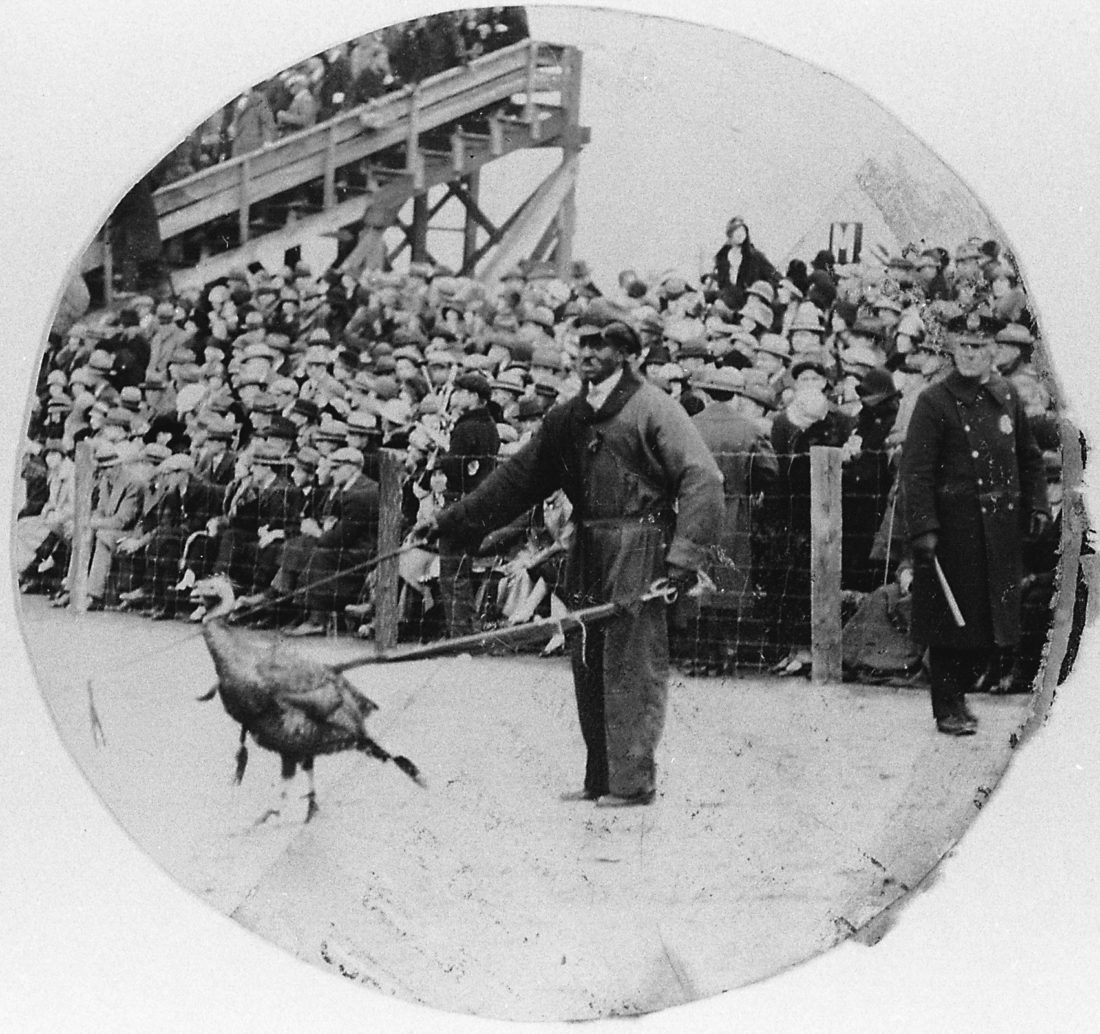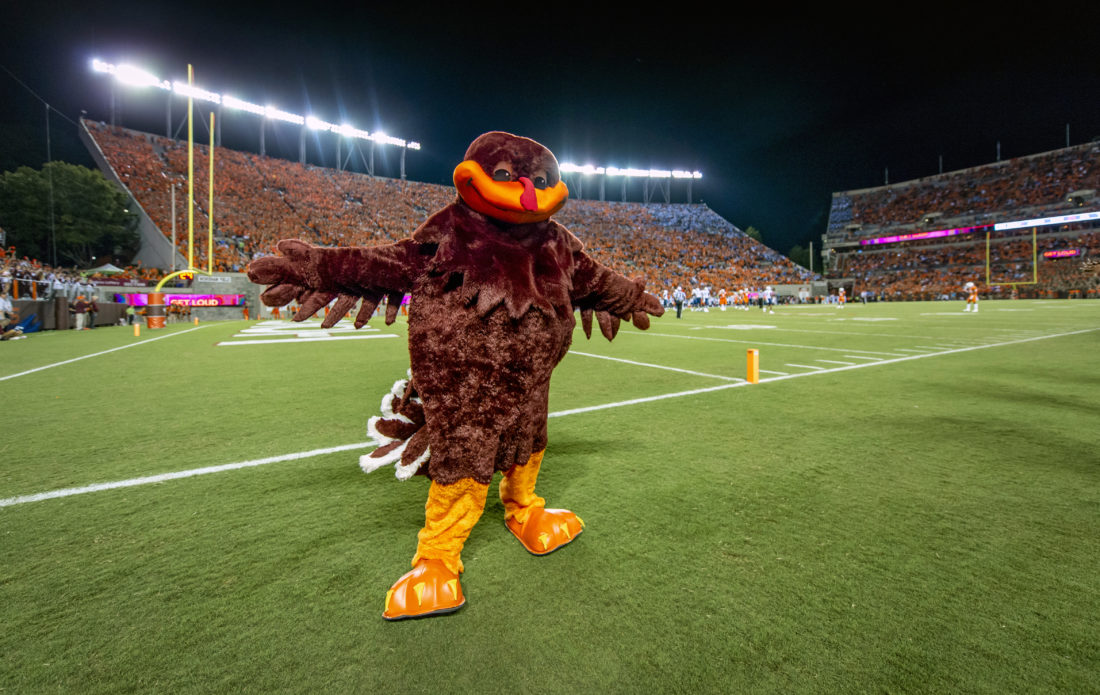If you ask a Virginia Tech fan what a Hokie is, they’ll probably respond, “I am.” But really, Hokie is a made-up word with a funny history that’s evolved to represent the fans and athletes decked out in burnt orange and maroon. It’s the HokieBird that’s the mascot (there’s a difference). And the mascot is often misunderstood. “It’s not a castrated turkey; it’s just a unique mascot,” says Damian Salas, a senior director at Virginia Tech’s Athletic Department who has worked at the university for twenty-three years.
Virginia Tech student O.M. Stull invented the word “Hoki” in 1896 to win a cheer contest after the university renamed itself Virginia Agricultural and Mechanical College and Polytechnic Institute, abbreviated VPI. Stull took home the $5 prize with his cheer, “Hoki, Hoki, Hoki, Hy; Techs! Techs! V.P.I.” People asked Stull what “Hoki” meant. “I just made it up because it went with the tune,” he said, according to Salas. It wasn’t long before an “e” appeared at the end of the word and fans adopted Hokie as a nickname for Virginia Tech athletes.

Then came Tech’s first mascot performer, Floyd “Hardtimes” Meade, and the Gobbler—a live turkey Meade trained to perform tricks. The Gobbler could flap its wings on command and pulled a two-wheeled cart during football games in the early 1900s. It’s unclear why the Hokies became known as the Fighting Gobblers or what inspired Meade and his turkey tricks. Most commonly, people think the way Tech athletes “gobbled up” their food inspired the nickname. “I don’t know where the turkey came from,” Salas says. “Maybe from our agricultural background.” Regardless, Hokie took a backseat for about seventy years.
In the 1960s, Mercer MacPherson, a Virginia Tech senior, raised nearly $200 to make the first Gobbler mascot costume to replace the live turkey. But after Tech hired Bill Dooley in 1978 as its new football coach, he pushed for a major change in the athletic department: He didn’t like the Gobbler and how it allegedly alluded to how the athletes ate. So he brought back the Hokie name, beginning to change the mascot’s image.

Finally, on Sept. 12, 1987, during Virginia Tech’s football season opener against Clemson, a white limousine pulled into the end zone and the HokieBird, as we now know it, stepped out. Although the HokieBird doesn’t have a name, he is a boy, according to Salas. “He’s fun-loving and will interact with everyone,” he says. “Some [people] are actually scared of him. I’ve seen adults scared of the HokieBird. They just have a thing against mascots.”
When the HokieBird isn’t hyping up fans in Lane Stadium, he can be found wandering around the Drillfield, popping into dorm rooms, and even making celebrity appearances at alumni weddings. Although the Gobbler is no longer, Virginia Tech is still (mostly) turkey friendly. For the past four or five years, Salas says, the lucky turkeys that receive a presidential pardon on Thanksgiving at the White House get to live out the rest of their lives on the Blacksburg campus. But some Lane Stadium vendors still sell massive smoked turkey legs.
This article is part of a G&G series that decodes widely used but little understood phrases in college football.








